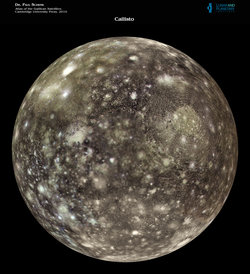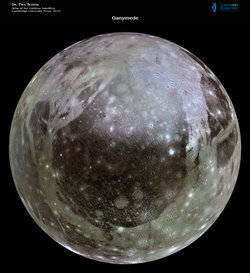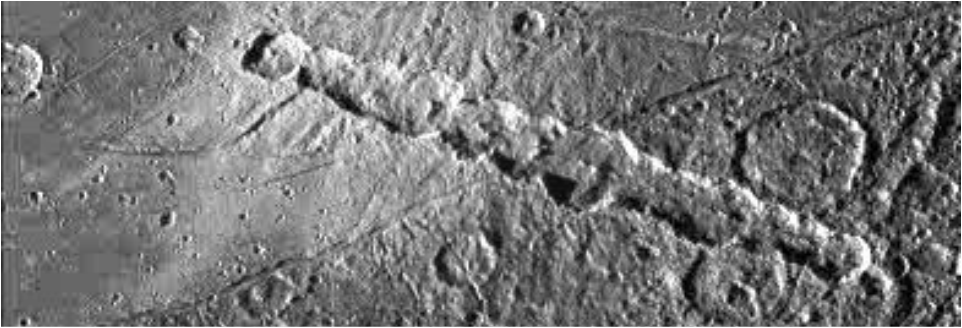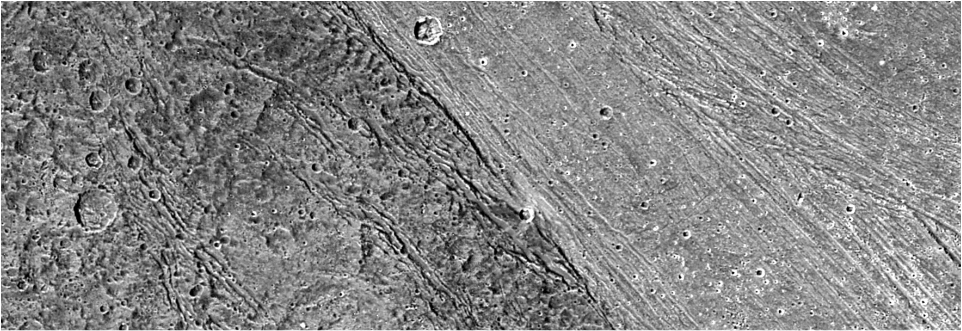Astronomy.
Early in my career I studied impact cratering on the moons of Jupiter, primarily Ganymede. I was stationed down in Houston, TX, working for the Lunar and Planetary Institute, a facility associated with the NASA Johnson Space Center.
Here's a bit of what I did....Hint, I found out there are a lot of things in outer space that bump into each other. However, not as many as there used to be.
Here's a bit of what I did....Hint, I found out there are a lot of things in outer space that bump into each other. However, not as many as there used to be.
IMPACT CRATERING
Zahnle, K.J., Schenk, P.M., Sobieszczyk, Steven, Dones, Luke, and Levison, H.F., 2001, Differential cratering of synchronously rotating satellites by ecliptic comets: ICARUS, v. 153, no. 1, p. 111-129

We use Monte Carlo methods to simulate impacts of ecliptic comets on the synchronously rotating satellites of giant planets. We reconfirm the long-standing prediction that the cratering rate should be much higher on the leading hemispheres than on the trailing hemisphere; indeed we find that previously published analytical formulations modestly underestimate the degree of apex-antapex asymmetry to be expected. We then compare our results to new mapping of impact craters on Ganymede, Callisto, and Triton. Ganymede reveals a pronounced apex-antapex asymmetry that is nonetheless much less than predicted. All of Triton’s confirmed impact craters are clustered toward the apex of motion, far exceeding the predicted asymmetry. No asymmetry is observed on Callisto. In each case at least one of our basic assumptions must be wrong. Likely candidates include the following: (i) the surfaces of all but the most sparsely cratered satellites are saturated or nearly saturated with impact craters; (ii) these satellites have rotated nonsynchronously over geological time; (iii) most of the craters are made not by heliocentric (Sun-orbiting) comets and asteroids but rather by planetocentric (planet-orbiting) debris of indeterminate origin; or (iv) pathological endogenic resurfacing has created illusions of structure. Callisto’s surface is readily classified as nearly saturated. Ganymede’s bright terrains, although less heavily cratered than those of Callisto, can also be explained by crater densities approaching saturation on a world where endogenic processes were active. The leading alternative is nonsynchronous rotation, an explanation supported by the distribution of catenae (crater chains produced by impact of tidally disrupted comets). Triton’s craters can be explained by planetocentric debris or by capricious resurfacing, but both hypotheses are inherently improbable.
Schenk, P.M., and Sobieszczyk, Steven, 1999, Cratering asymmetries on Ganymede and Triton - From the sublime to the ridiculous: 31st Annual Meeting of the DPS, October 1999, Session 70: Ganymede and Callisto

A factor of > 20 difference in crater density between the apex and antapex of motion is predicted on Ganymede (Zahnle et al, Icarus, 136, 1998) for craters formed by Jupiter-family comets (JFCs). Less pronounced asymmetries are predicted if other bodies dominate the projectile flux. Voyager-based crater counts suggested little or no leading-trailing asymmetry, in part because resolvable imaging at the apex and antapex regions were not obtained by Voyager. Using Galileo regional scale images of these regions we have completed the crater counts of these regions down to 30-km diameters. To reduce the importance of stochastic variations in crater density, we bin the crater counts in 20-degree wide bands surrounding the apex and antapex. We also restrict our reported counts to younger bright terrain. Our counts indicate a difference in crater density between apex and antapex regions of 2 to 4. (Counts are being extended to 20-km diameter to further reduce stochastic variations.) Distributions of crater chains formed by tidally disrupted comets do not strongly support the idea of sustained nonsynchronous rotation of Ganymede after the time of bright terrain formation. Hence, the observed leading-trailing asymmetry suggests that the population of impactors since bright terrain formation is not dominated totally by JFCs. A contribution of 25-50 a uniformly distributed population (e.g., planetocentric) to the present crater population could explain the observed asymmetry on Ganymede. Triton, on the other hand, exhibits the strongest leading-trailing hemisphere asymmetry possible, with no craters larger than 4 km on the trailing hemisphere and > 150 on the leading hemisphere. Only a planetocentric population, with virtually no contribution from heliocentric bodies, can explain such a distribution on a retrograde body. If so, the lack of Kuiper-belt impacts on Triton points to an extremely young surface age for Triton, and may indicate that the satellite is geologically active today, and perhaps, as some have suggested, may possess an internal ocean like Europa.
Sobieszczyk, Steven, and Schenk, P.M., 1999, Mapping the impact crater asymmetry on Ganymede: NASA Lunar and Planetary Institute, 15th Annual Summer Intern Conference, Houston, TX, p. 16-18
Schenk, P.M., and Sobieszczyk, Steven, 1999, Estimate of areal coverage of bright terrain is based on a new global map of Ganymede: Bulletin of American Astronomical Society, v. 31, p. 1182








